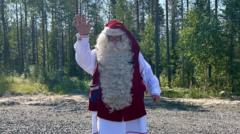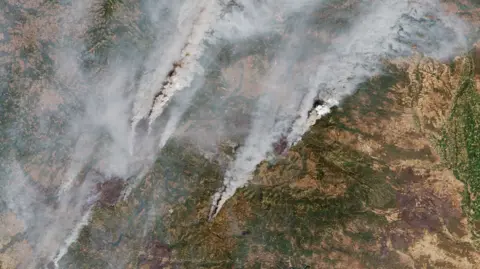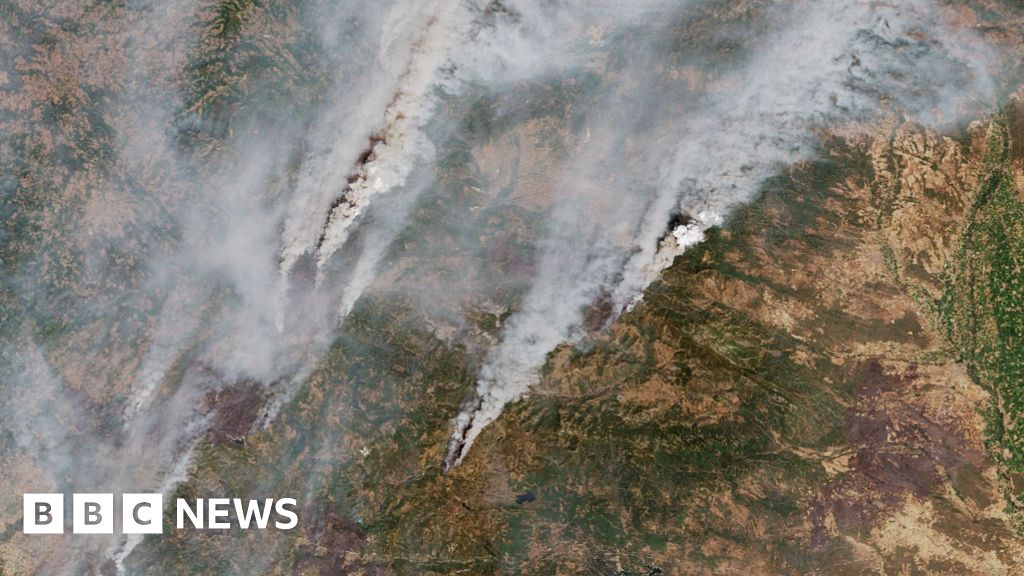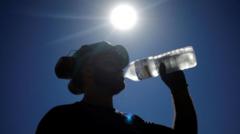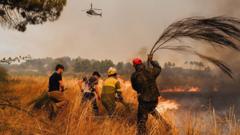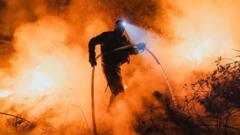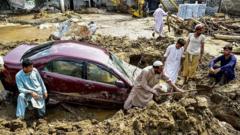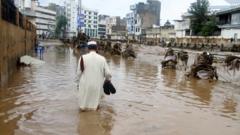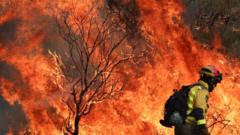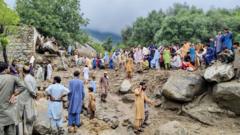---
In an unusual turn of events for the Arctic, Santa Claus is under unexpected pressure to keep his elves hydrated as Lapland faces an unprecedented heatwave. This year, the northern regions of Finland have seen temperatures rise to around 30°C, a stark contrast to the typically cooler climate expected during summer months. Santa, clad in his traditional heavy costume, is retreating indoors during the hottest parts of the day and only venturing out for an evening swim once the temperatures start to dip.
The city of Rovaniemi, known as Santa's official hometown, has been embracing the warmth with a spirit of resilience, despite the serious repercussions of climate change. After a relatively chilly and wet spring, Finland has entered an extended period of summer heat, with Rovaniemi experiencing its heatwave for fifteen consecutive days, surpassing the definition of a heatwave set by the Finnish Meteorological Institute.
Meteorologist Jaakko Savela notes that heatwaves are rare in Lapland, with the last recorded similar event occurring in 1972, lasting only 12 to 14 days. This year, readings at two locations reached an astonishing 31.7°C, significantly exceeding the seasonal average by approximately 10°C. The thermometer even showed a sweltering 33°C at the Santa Claus Village.
The duration and intensity of the current heatwave have raised alarms regarding the accelerating influence of climate change in the Arctic, where temperatures are rising four to five times faster than the global average. While the current heatwave isn’t directly attributed to climate change, its occurrence without the underlying effects of climate change would have been highly unlikely.
Prof. Jeff Weller from the University of the Arctic emphasizes the increasingly frequent occurrence of extreme temperatures, attributing them to significant shifts in the climate. He explains that episodes of extreme heat will become more common as global warming continues, affecting weather patterns for years to come.
The extreme heat is also wreaking havoc on the local wildlife, as Lapland's iconic reindeer, often associated with Santa's sleigh, are driven to roads and urban areas in search of relief from bothersome mosquitoes, which thrive in the heat. Prof. Weller posits that reindeer herders might need to offer their animals shelters with shade in the future.
Tourists visiting the traditionally cool destination are finding themselves unprepared for the sweltering heat, with one visitor from Prague expressing frustration at having brought only summer attire. Another tourist from London finds the unusual warmth disheartening, reminiscing about the typical icy allure of Lapland.
As concerns over climate patterns' future persist, elves, tourists, and even Santa himself express worries about the implications of prolonged heatwaves in this once-stable winter wonderland. With increasing temperatures, Santa reflects on his preference for snow over sun, hoping that the warmth will be a fleeting phenomenon and that winter will return to Lapland soon.
In an unusual turn of events for the Arctic, Santa Claus is under unexpected pressure to keep his elves hydrated as Lapland faces an unprecedented heatwave. This year, the northern regions of Finland have seen temperatures rise to around 30°C, a stark contrast to the typically cooler climate expected during summer months. Santa, clad in his traditional heavy costume, is retreating indoors during the hottest parts of the day and only venturing out for an evening swim once the temperatures start to dip.
The city of Rovaniemi, known as Santa's official hometown, has been embracing the warmth with a spirit of resilience, despite the serious repercussions of climate change. After a relatively chilly and wet spring, Finland has entered an extended period of summer heat, with Rovaniemi experiencing its heatwave for fifteen consecutive days, surpassing the definition of a heatwave set by the Finnish Meteorological Institute.
Meteorologist Jaakko Savela notes that heatwaves are rare in Lapland, with the last recorded similar event occurring in 1972, lasting only 12 to 14 days. This year, readings at two locations reached an astonishing 31.7°C, significantly exceeding the seasonal average by approximately 10°C. The thermometer even showed a sweltering 33°C at the Santa Claus Village.
The duration and intensity of the current heatwave have raised alarms regarding the accelerating influence of climate change in the Arctic, where temperatures are rising four to five times faster than the global average. While the current heatwave isn’t directly attributed to climate change, its occurrence without the underlying effects of climate change would have been highly unlikely.
Prof. Jeff Weller from the University of the Arctic emphasizes the increasingly frequent occurrence of extreme temperatures, attributing them to significant shifts in the climate. He explains that episodes of extreme heat will become more common as global warming continues, affecting weather patterns for years to come.
The extreme heat is also wreaking havoc on the local wildlife, as Lapland's iconic reindeer, often associated with Santa's sleigh, are driven to roads and urban areas in search of relief from bothersome mosquitoes, which thrive in the heat. Prof. Weller posits that reindeer herders might need to offer their animals shelters with shade in the future.
Tourists visiting the traditionally cool destination are finding themselves unprepared for the sweltering heat, with one visitor from Prague expressing frustration at having brought only summer attire. Another tourist from London finds the unusual warmth disheartening, reminiscing about the typical icy allure of Lapland.
As concerns over climate patterns' future persist, elves, tourists, and even Santa himself express worries about the implications of prolonged heatwaves in this once-stable winter wonderland. With increasing temperatures, Santa reflects on his preference for snow over sun, hoping that the warmth will be a fleeting phenomenon and that winter will return to Lapland soon.

